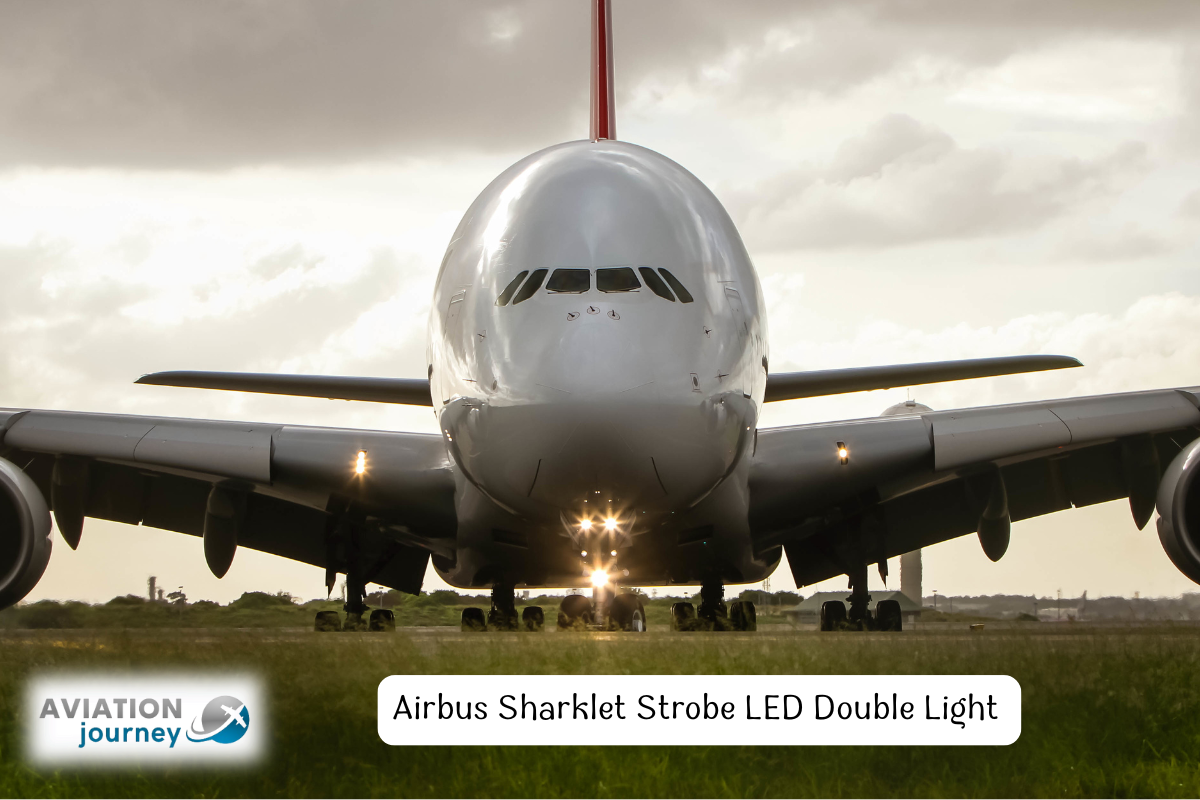Airbus Sharklet Strobe LED Double Light Upgrade
Lighting systems on modern aircraft play a vital role in safety and efficiency. One such innovation that’s reshaping aviation visibility standards is the Airbus Sharklet Strobe LED Double system. Known for its enhanced brightness and energy efficiency, this lighting upgrade not only ensures higher visibility but also complements the aerodynamic design of Sharklets. In this article, we delve into why this specific strobe LED system is making waves across the industry and how it benefits operators globally.
Understanding the Airbus Sharklet Strobe LED Double
The Airbus Sharklet Strobe LED Double is a dual-light, high-intensity LED system installed on the aircraft’s wingtip extensions known as Sharklets. Designed for increased visibility during both day and night operations, it contributes significantly to flight safety, especially during take-off, landing, and low-visibility conditions.
While traditional strobe lights utilized xenon bulbs, modern LEDs offer better durability, require less maintenance, and consume less power. This makes the double LED configuration on Sharklets not only brighter but also more reliable.
Why Choose LED Over Traditional Xenon?
Although xenon strobe systems were once the norm, LEDs are now preferred for several compelling reasons:
-
Energy Efficiency: LEDs use significantly less power than their xenon counterparts.
-
Longer Lifespan: Reduces maintenance costs and frequency.
-
Greater Visibility: Delivers clearer, sharper illumination.
-
Environmentally Friendly: Lower heat emissions and no harmful gas.
Moreover, since aircraft rely on electrical power efficiency, LED lighting systems like the Airbus Sharklet Strobe LED Double are ideal for conserving energy without sacrificing performance.
Advantages of Sharklet-Integrated Double LED Strobes
By incorporating the Airbus Sharklet Strobe LED Double into the wingtips, airlines benefit from both functional and operational enhancements:
-
Increased Visibility: Crucial for ground crew coordination and airspace recognition.
-
Aerodynamic Benefits: The integration with Sharklets helps reduce drag.
-
Redundancy: Dual LEDs ensure continuous lighting even if one fails.
-
Reduced Maintenance Downtime: Thanks to the longevity of LED modules.
Transitioning to a double LED system allows for improved situational awareness during taxiing and in congested airspace.
How the Airbus Sharklet Strobe LED Double Enhances Safety
Safety remains the foremost priority in aviation. The improved brightness and redundancy of the Airbus Sharklet Strobe LED Double ensure that other pilots, air traffic controllers, and ground staff can easily identify aircraft in low-light or harsh weather environments. Since collisions and incidents often occur due to poor visibility, this system helps mitigate such risks efficiently.
Installation and Compatibility Considerations
When planning to upgrade, it’s essential to ensure that your aircraft’s Sharklets are structurally compatible. Fortunately, most Airbus A320neo family aircraft and retrofitted older models can support this system with minimal modifications. Installation often involves minimal downtime and integrates smoothly with the aircraft’s existing electrical system.
Cost and ROI of LED Double Strobes
While LED upgrades might carry a higher upfront cost than traditional bulbs, they offer substantial long-term savings. Operators benefit from:
-
Lower replacement frequency
-
Reduced operational disruptions
-
Enhanced aircraft resale value
Considering the fuel efficiency boost from Sharklets and the maintenance reduction from LED systems, the combined return on investment becomes clear rather quickly.
Comparing Single vs. Double LED Systems
You might wonder if a single strobe LED would suffice. However, here’s how the double system stands out:
| Feature | Single LED Strobe | Double LED Strobe |
|---|---|---|
| Redundancy | Low | High |
| Brightness | Moderate | Excellent |
| Maintenance Frequency | Moderate | Low |
| Visibility Range | Standard | Extended |
Clearly, the Airbus Sharklet Strobe LED Double provides superior illumination and system reliability.
Environmental Impact of LED Aviation Lighting
With sustainability at the forefront of aviation advancements, LED systems help reduce carbon footprints. Not only do they draw less power from the aircraft’s APU, but they also last longer, reducing waste and contributing to greener skies.
Future Trends in Aircraft Lighting
As aviation moves toward more electric aircraft and greener technologies, expect future lighting systems to include:
-
Smart sensors
-
Wireless diagnostics
-
Adaptive brightness controls
The Airbus Sharklet Strobe LED Double is a stepping stone toward these next-gen innovations.
Conclusion
The Airbus Sharklet Strobe LED Double system stands out as a beacon—literally and figuratively—in modern aviation lighting. It enhances safety, cuts costs, improves visibility, and aligns with future-ready sustainable aviation goals. As more airlines prioritize operational efficiency and safety, this dual LED upgrade offers a smart, forward-thinking solution.
See Also: Boeing 727 Auction at El Paso Airport Unveiled
FAQs
What is used for?
It provides high-intensity illumination on the wingtip for increased visibility and safety during flight operations.
How is it better than traditional strobe lights?
It consumes less energy, lasts longer, and provides superior brightness, especially useful in poor weather or night flights.
Is this system compatible with all Airbus aircraft?
Mainly with newer Airbus A320 family models, especially those equipped with Sharklets. Retrofitting older models is possible but requires additional approvals.
How often do these LED units need maintenance?
Due to their long lifespan, they typically require far less frequent maintenance than xenon-based systems.
Are there any operational benefits aside from lighting?
Yes, improved aerodynamics, better fuel economy, and reduced drag when integrated with Sharklets.

